Nighttime Wonder: Stargazing at Arches National Park
Discover the Magic of the Desert Sky in Southeast Utah
Summary
Away from the light caused by the urban areas, Arches National Park in Southeastern Utah has one of the darkest skies in the United States. Over at Arches, you will be able to witness a wealth of stars with just your naked eye; and under the right conditions, you might be able to see the rings of Saturn with just common binoculars! This guide will help you get ready for unforgettable night sky adventure unlike any other at Arches National Park.
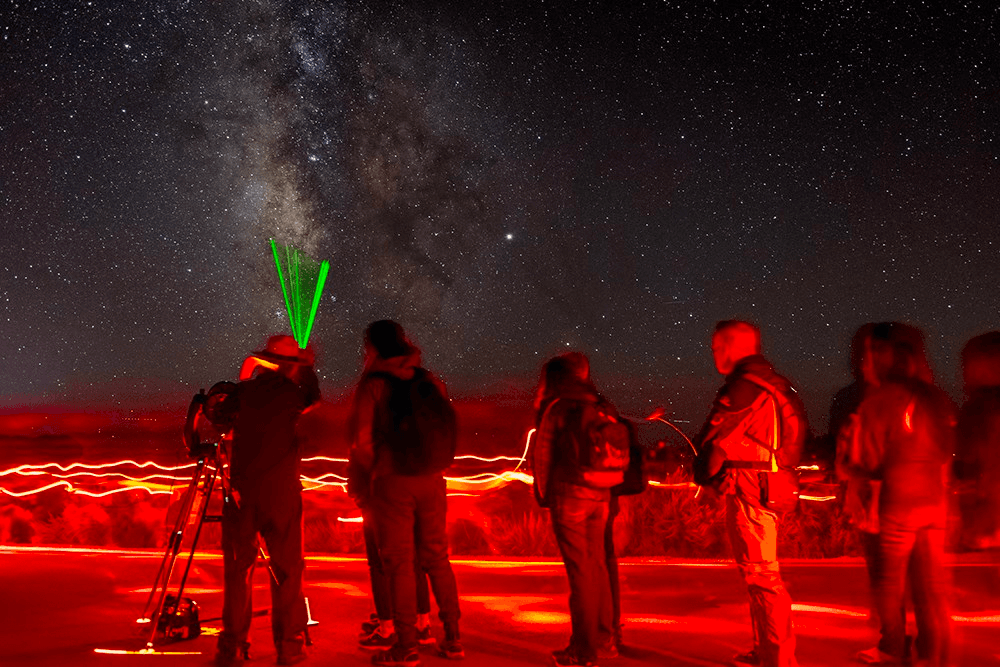
Transportation
💡 Having a car is very essential if you are planning to visit the park.
Getting to the Park
The journey to Arches National Park is just the beginning of your adventure. The most common mode of transport to get to the park would be by car. If you are visiting the park from other states, you can consider flying in to one of these airports:
✈️ Canyonland Field Regional Airport: 15 minutes drive to the park
✈️ Grand Junction Regional Airport: 1.5 hour drive to the park
✈️ Salt Lake City International Airport: 3.5 hour drive to the park
Transportation Within the Park
There is no public transport within the park. To get around, you will need to drive, cycle, or go on a tour. For stargazing in particular, driving is rather essential as the best spots to stargaze are often a distance away from the main entrance. However, as parking could be limited especially during peak seasons, consider carpooling where possible.
Best Time to Visit
The best time for stargazing is when you can’t see the moon and the skies are at their darkest — which would be during the time around the new moon. You can check out Discover Moab for more information about the moon phases.
However, the park is open year-round, so you can plan your visit for any time of year. The park is most popular during summer, or during the spring and fall months in April-May or September-October, where the weather is more comfortable.
If you want to avoid the crowds entirely, then visit during Winter — though you would have to be prepared to endure the cold.
Best Places to Stargaze
There are many areas in the park that you can stargaze. Some general tips to help you find a spot to stargaze: stay away from the main roads where the cars are; look for a high viewpoint or wide open areas; and the further North you drive, the darker the skies will be, and the better it is for stargazing.
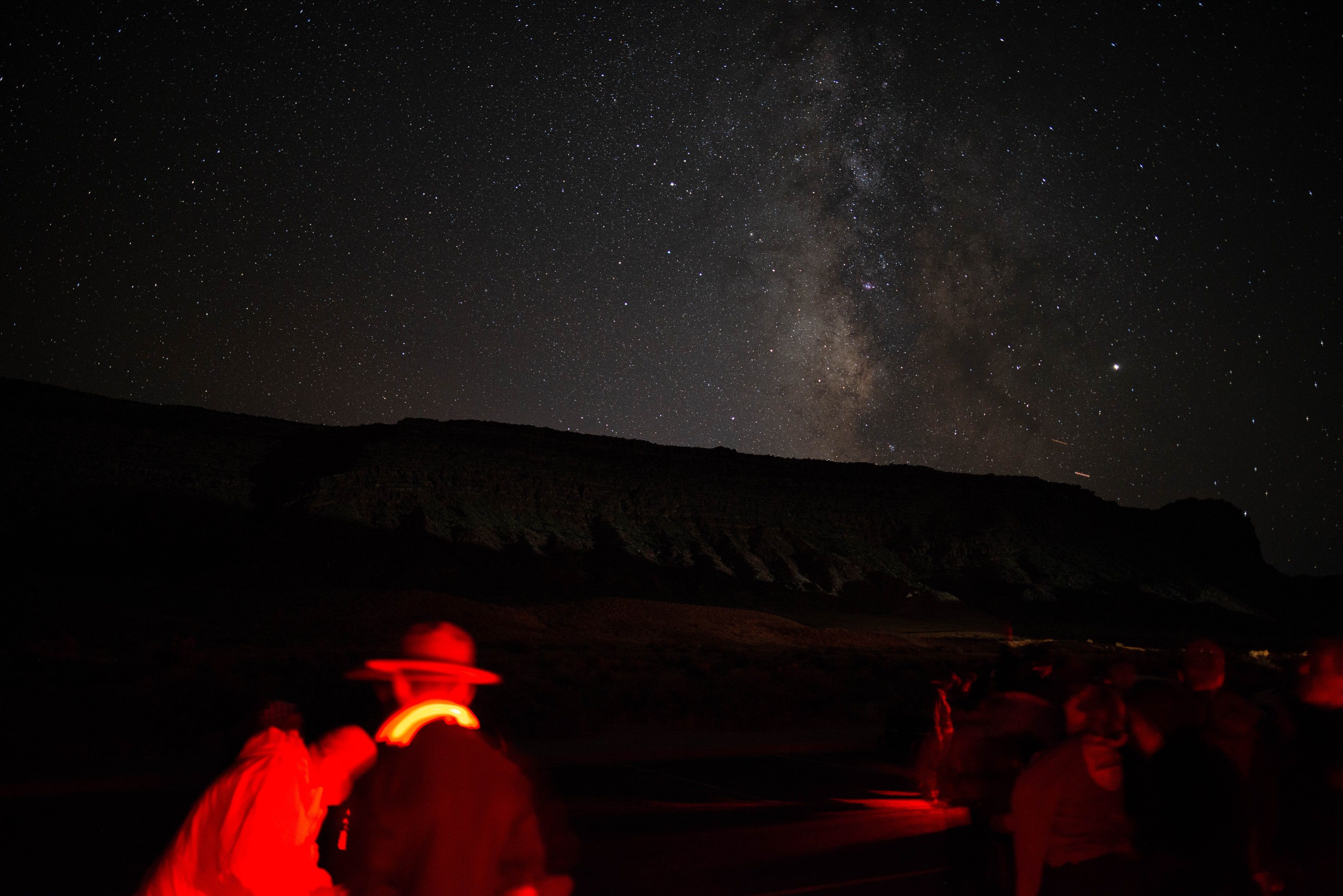
Here are some of the best spots to stargaze in the park:
Balanced Rock Picnic Area
The Balanced Rock is one of the most iconic features of the Arches National Park. Across the main park road of the Balanced Rock lies a large picnic area, which has been recommended by the National Park Service as one of the best spots for stargazing. Just a 20 minutes drive away from the entrance, it is also one of the most accessible spots.
**Garden of Eden Viewpoint **
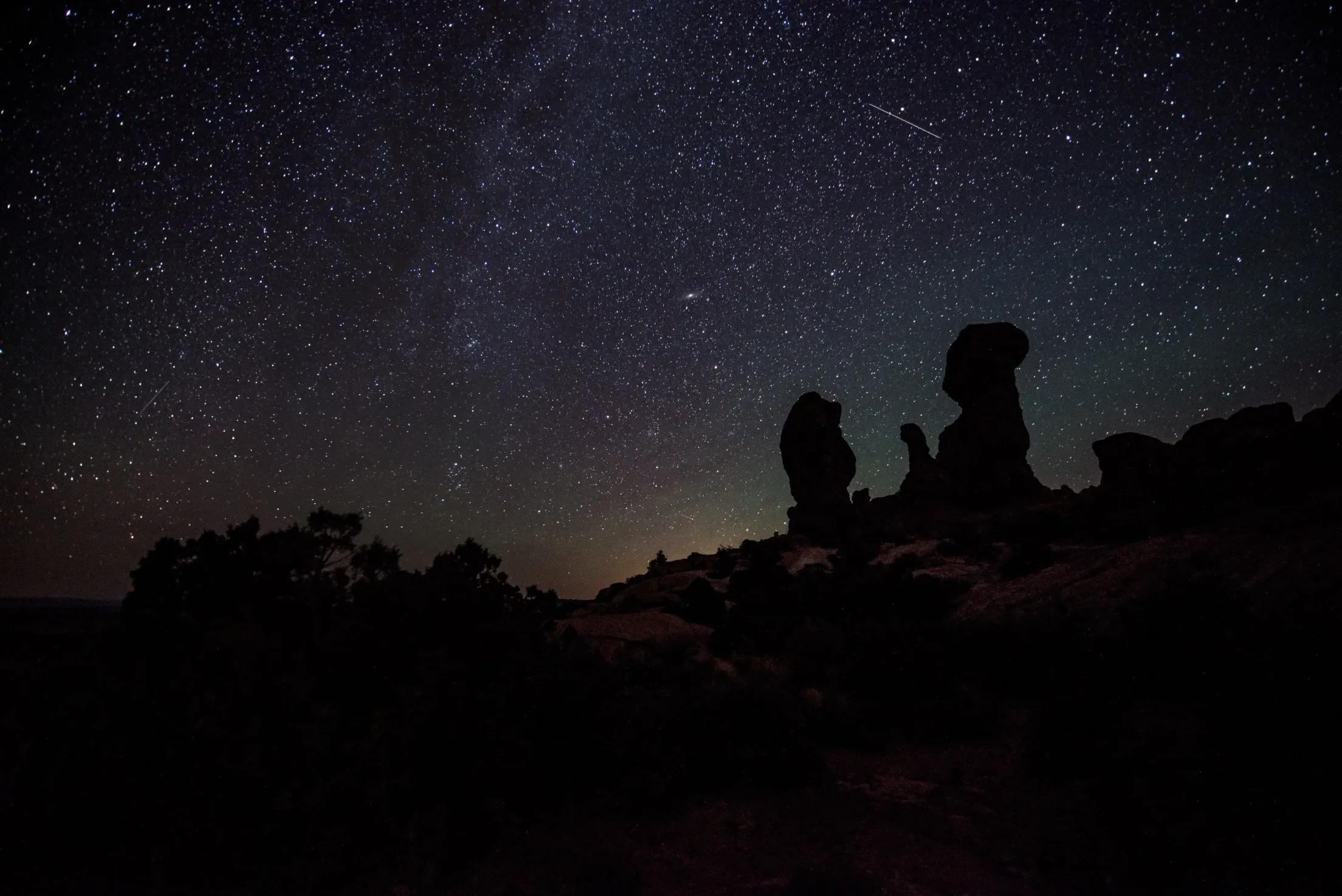
The Garden of Eden Viewpoint is another location for stargazing that is recommended by the National Park Services. As compared to the iconic Balanced Rock, the Garden of Eden Viewpoint tends to be much less crowded, perfect for those looking for a quiet night out under the stars.
Windows Section
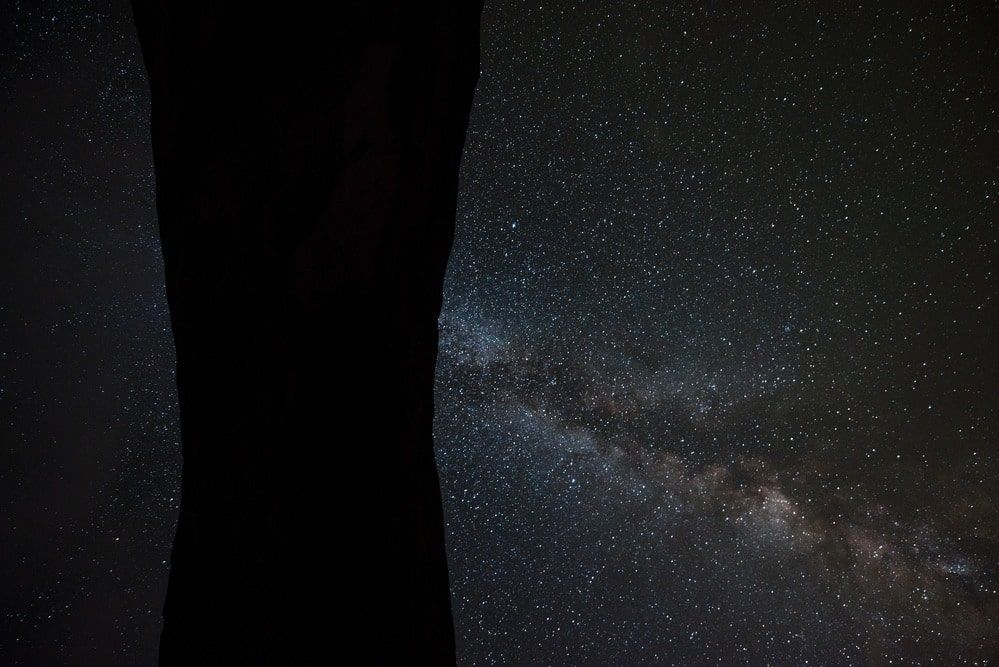
Windows Section is one of the most popular places to visit in the park. But it is also one of the best spots for stargazing. It is just a 30 minute drive away from the entrance, but is far enough from the light pollution to enjoy the dark skies. Here, you can look up at the Milky Way through the North Window and South Window arches. The dark skies of the park provide a perfect backdrop for viewing the constellations, and the arches add an extra element of magic to the experience. The Windows Section is also a popular area for the viewing of sunset.
Panorama Point
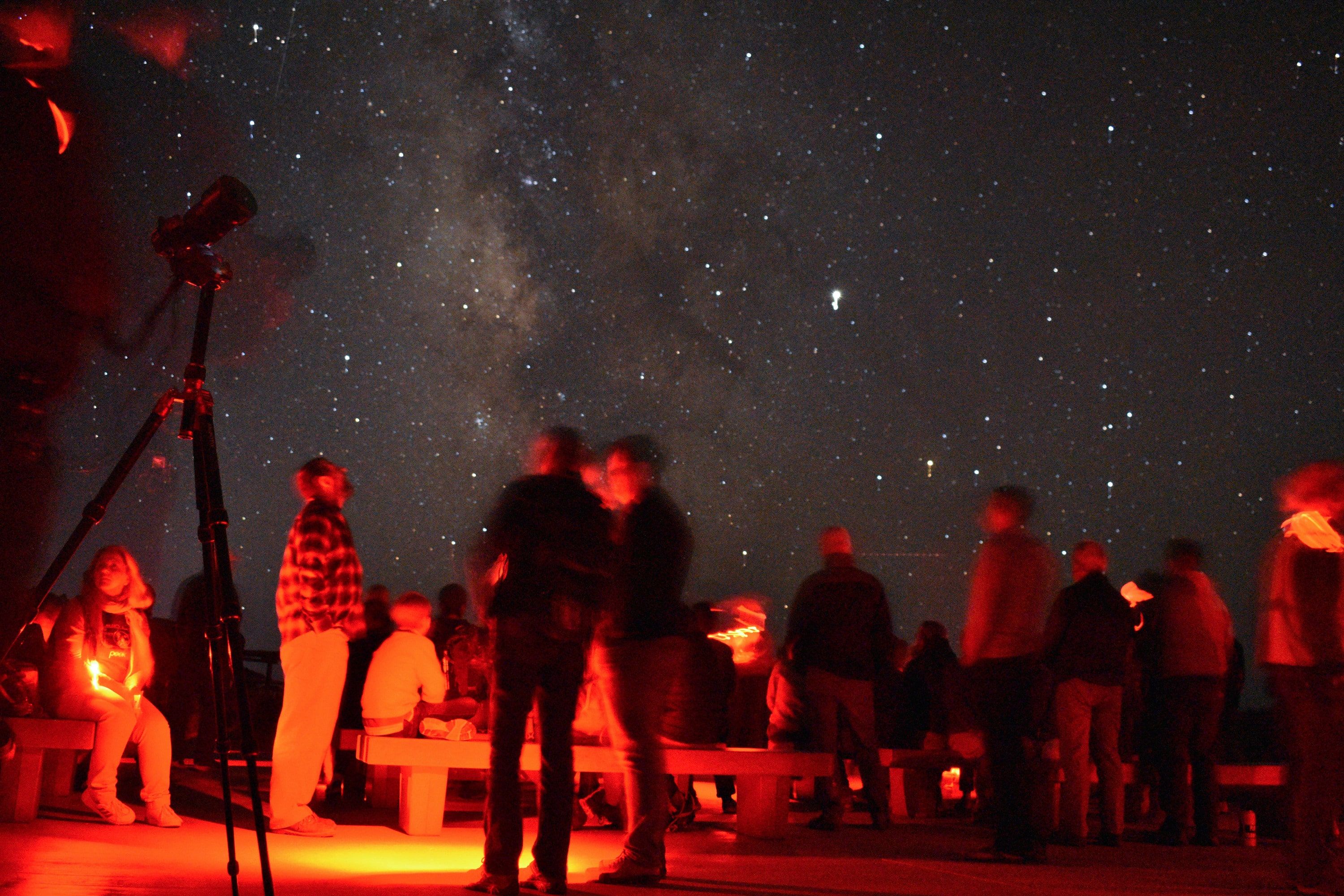
The Panorama Point is one of the most common spots for stargazing, and is often a spot for the stargazing ranger programs. At the Panorama Point, you will be able to get very expansive views in all directions, making it a very popular spot for night sky photography. There is also a picnic area at the Panorama Point.
Delicate Arch Viewpoint
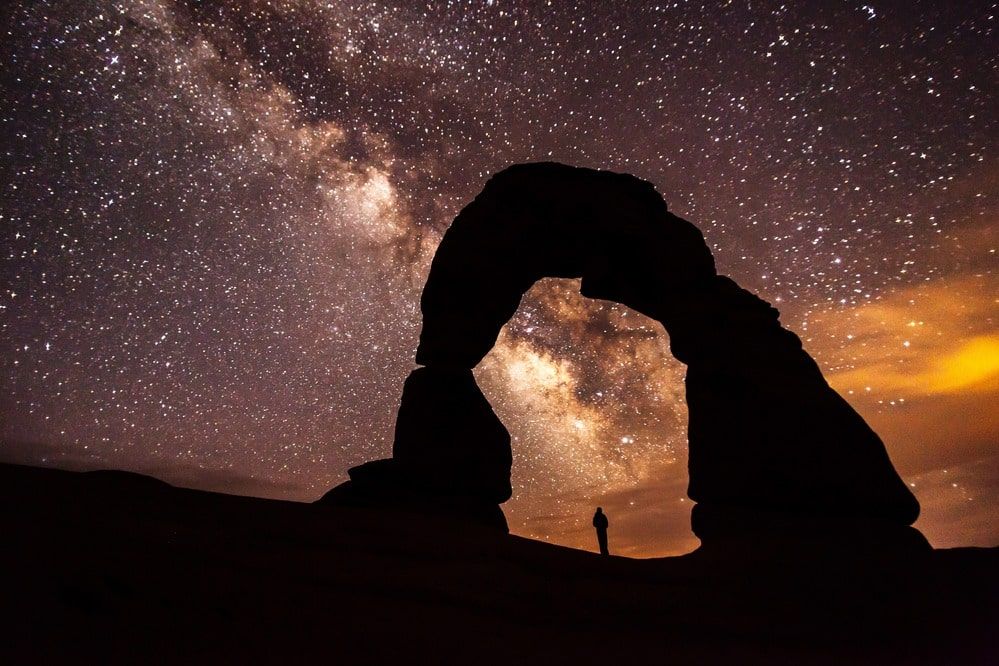
The Delicate Arch is one of the most iconic features of the park. It is magnificent in the day, but when night falls and it gets illuminated by the stars, you will be treated to another breathtaking view. But if you don’t want to hike up to the arch — especially not at night — then head to the Delicate Arch Viewpoint. From the viewpoint, you can get a beautiful view of the Delicate Arch, albeit from a distance. Bring along a binoculars if you want to see the arch from the Viewpoint. You will also get some of the best sunrise views at the Delicate Arch Viewpoint.
Devil’s Garden Campground
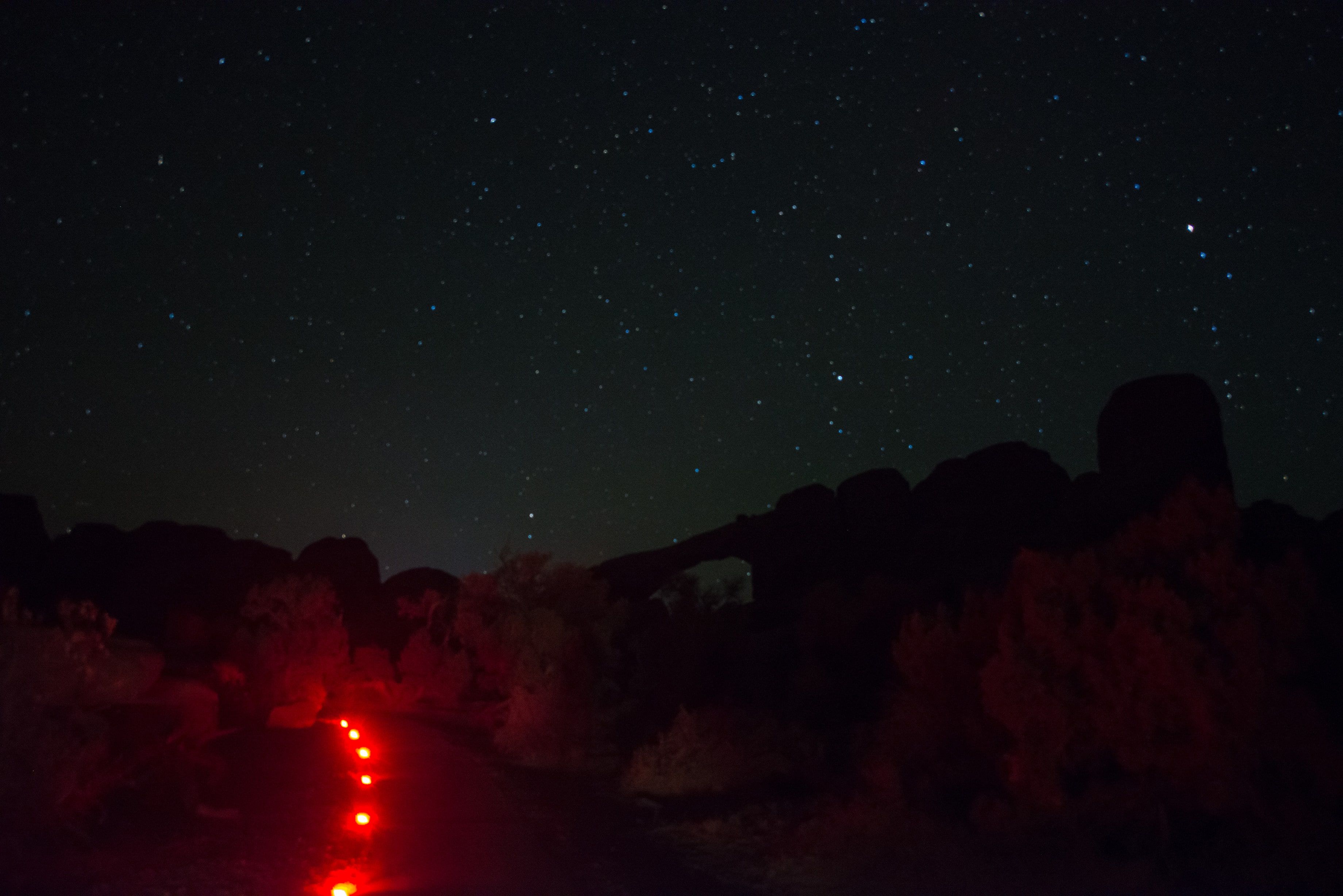
Devil’s Garden Campground is the only campground in Arches National Park and is often booked out months in advance. If you are one of the lucky ones to get a reservation at this campground, you can skip the driving around the park and simply enjoy the night sky from the comfort of your campsite!
Where to Stay

If you will be up late stargazing and want a truly immersive experience, consider camping near the park, or even better - in the park. Here are some recommendations for camping options:
Devil’s Garden Campground
The Devil’s Garden Campground is the only campground in the park. During the peak seasons between March and October, you will need to reserve a spot in advance. From November to February, the campsites are available on a first-come-first-serve basis. If you are planning to camp at the Devil’s Garden Campground, take note that there is no camp store so you will need to get your supplies in advance. It should also be noted that cell reception is not great at the site.
Sun Outdoors Arches Gateway
Sun Outdoors Arches Gateway is a campground located near the Arches National Park. It has RV sites and tent sites. But if you will not have your own camping equipment, and yet still want to experience camping, you will be glad to know that Sun Outdoors Arches Gateway also has cabins and airstreams available for rental! As compared to the Devil’s Garden Campground, the Sun Outdoors Arches Gateway is much more well-equipped with a store and other amenities — great for those who want to have some luxury in the midst of nature.
Moab KOA Holidays
KOA Holidays is an established organisation with many campgrounds across the United States. Unsurprisingly, they also have a campground at Moab, near the Arches National Park. In addition to RV sites, the campsite also has rental cabins for those who do not have your own camping equipment. They also have a camp store for you to grab your supplies.
But if you are looking for a more luxurious and comfortable stay, there are also many hotels near the park that you could choose from, such as:
- Holiday Inn Express & Suites Moab
- Hyatt Place Moab
- Fairfield Inn & Suites by Marriott Moab
- Comfort Suites Moab
Things to Know Before You Go
- Arches National Park is a very popular national park which expects many visitors. To help to manage the crowd, timed-entry tickets are required for visits from April to October, and reservations are open up to three months in advance. Timed-entry tickets are required for entry between 7am to 4pm — but if you are visiting at night for stargazing, you will likely be visiting outside this window and an entry ticket will not be required.
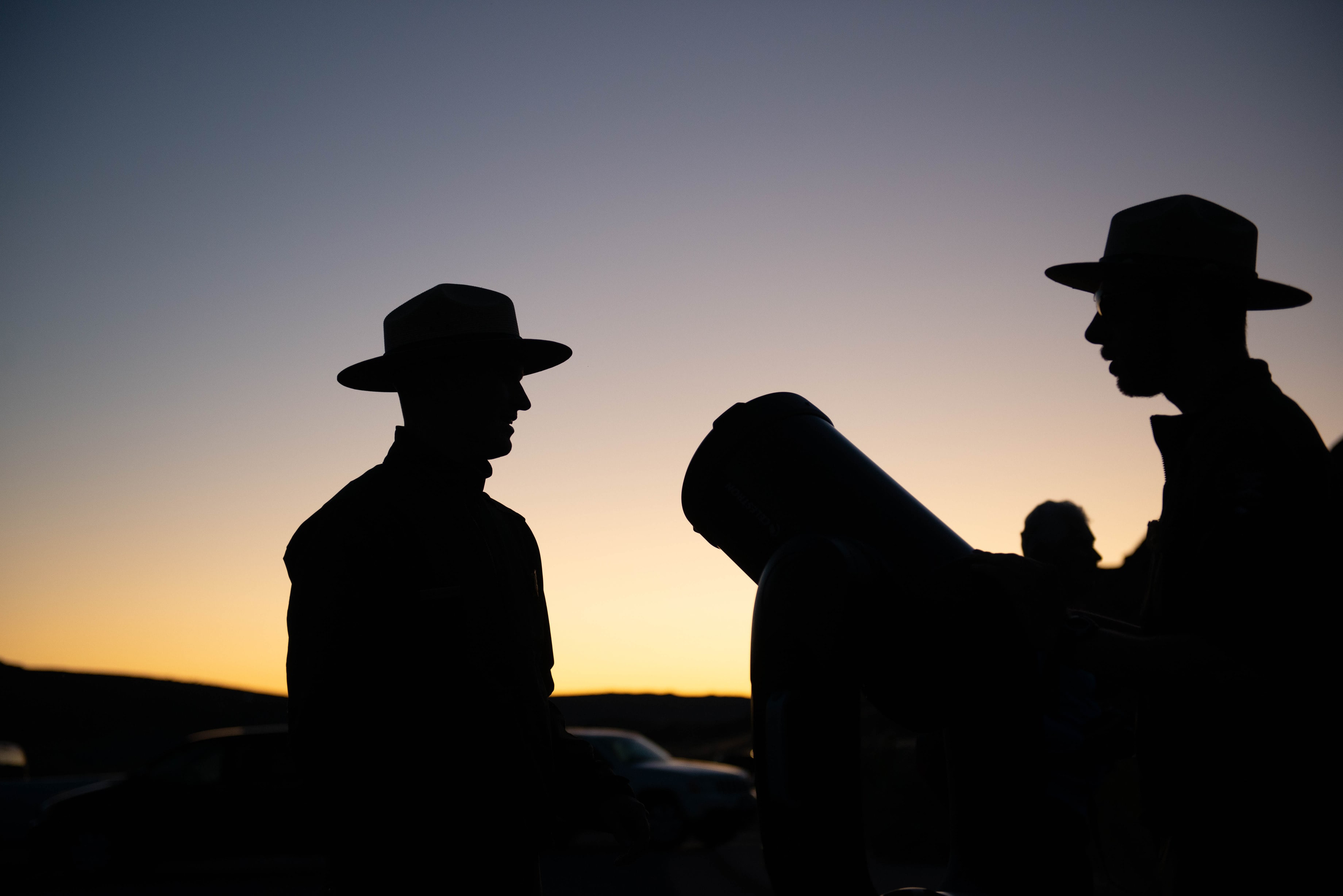
- Arches National Park will occasionally have stargazing events led by rangers. These events will typically take place during spring and fall around the days of the new moon, and will last 1-3 hours. You can visit the visitor centre to find out more about the schedules and details of the event. If you are lucky enough to visit the park on a day where the program is running, we recommend that you join the event for a more informative stargazing experience.
- Be very careful and remain on trails in the park. Always stay on trails to protect the fragile soil crusts and natural habitat. Especially at night where there is lower visibility, be sure to also stay on trail to reduce your risk of getting injured or lost.
- Be considerate and help to preserve the natural darkness. Do not shine your flashlights at the rock formations or other features.
- Help to maintain the natural environment — take your rubbish as you go, and do not leave marks on the rocks!
Tips
Stargazing in the desert may require some preparation. Here are some tips to help you prepare for your visit:
- Bring warm clothing and layer up, as temperatures between the day and night could be drastically different.
- Bring lots of water, especially if you are visiting during the summer. The desert is very dry so you will want to make sure to keep hydrated.
- Pack some light food for your visit. There are no restaurants in the park so you will want to have some food with you in case you get hungry.
- Bring a red-light flashlight or headlamp to help protect your eyes at night. If you don’t have a red-light flashlight, get a piece of red fabric or cellophane to cover your white light flashlight.
- Bring a pair of binoculars to observe the stars.
- Allow your eyes to adjust to the darkness, and be patient. You may need to wait up to 20 to 30 minutes for your eyes to fully adapt to the darkness. Once your eyes have adjusted, you'll be able to see the Milky Way, shooting stars, and other celestial wonders.
- Bring a star chart to help you identify the different constellations!